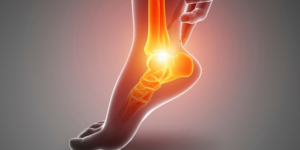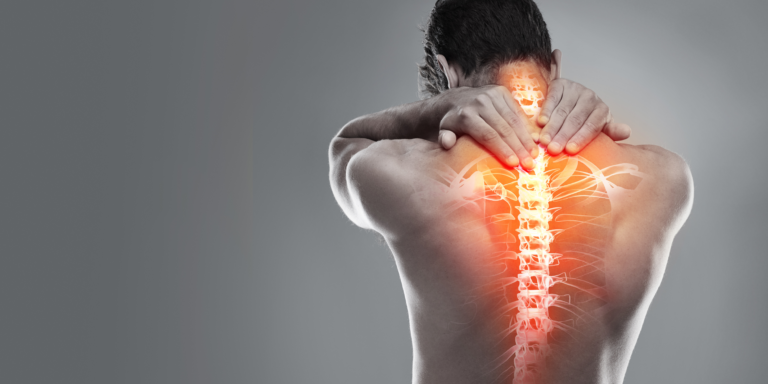
Treating Plantar Fasciitis Without Steroid Injections
Treating Plantar Fasciitis Without Steroid Injections If you’ve ever felt sharp heel pain with your first morning steps, you’re not alone. Plantar fasciitis—inflammation of the

Back pain is one of the most common modern ailments—affecting nearly everyone at some point in life. When discomfort becomes constant, many people turn to massage therapy for relief. And while a good massage can feel heavenly, the truth is massage alone isn’t enough to solve chronic back pain.
Let’s explore why that is, and what else your body might need to truly heal and stay pain-free.
Chronic back pain often develops slowly. It’s not just muscle soreness; it’s a complex issue involving the spine, nerves, and supporting muscles. Common causes include:
Prolonged sitting or poor posture
Weak or imbalanced core muscles
Previous injuries or trauma
Degenerative changes in spinal discs
Chronic stress or tension
Massage therapy can ease muscle tightness, but without addressing these deeper dysfunctions, the relief is short-lived.
There’s no denying the benefits of massage—it relaxes the body, increases blood flow, and temporarily relieves pain. However, it’s mostly a symptom-based therapy.
Massage:
Reduces tension in overworked muscles
Enhances circulation for faster healing
Improves temporary flexibility and comfort
But it doesn’t strengthen weak muscles, realign the spine, or retrain posture—all crucial to long-term recovery. That’s why many people feel better for a day or two, only to have the pain creep back.
To fully address chronic back pain, the solution must go beyond temporary relief and build resilience through movement. Combining massage with physiotherapy or exercise therapy can:
| Treatment | Purpose |
|---|---|
| Core strengthening | Builds stability around the spine |
| Mobility training | Prevents stiffness and improves range of motion |
| Posture correction | Reduces stress on the spinal discs |
| Manual therapy or osteopathy | Restores joint alignment |
| Ergonomic training | Prevents recurring strain in daily life |
Massage prepares the muscles, while movement retrains them. Together, they provide a holistic path to recovery.
It’s easy to overlook the emotional role in physical pain. Chronic stress tightens muscles and changes breathing patterns, feeding into the pain cycle. Massage helps you relax, but integrating mindfulness, deep breathing, or yoga alongside it can reduce tension even further.
A calm mind often equals a pain-free body.
Think of massage as one tool in your recovery toolbox. When combined with professional guidance, it enhances the results of:
Physiotherapy and chiropractic care
Targeted exercise programs
Heat or cold therapy
Lifestyle adjustments
This multidisciplinary approach doesn’t just treat pain—it rebuilds strength, restores flexibility, and prevents relapse.
If your back pain lasts more than three months, or if it keeps returning despite frequent massages, it’s time for a full assessment. A physiotherapist or spinal specialist can check for:
Muscle imbalances
Poor posture mechanics
Nerve compression
Weak stabilizing muscles
With a tailored plan, you can finally address the cause—not just the symptoms—of your chronic pain.
Massage can be wonderfully soothing, but it’s only one part of a lasting solution. Without exercise, postural correction, and professional rehabilitation, chronic back pain will likely return. True recovery requires an active and integrative approach—not just temporary relaxation.
So, while massage can calm the storm, it takes strength, awareness, and guidance to keep the clouds from coming back.
Can massage therapy cure chronic back pain?
No, massage can relieve symptoms but doesn’t fix the root causes like muscle weakness or misalignment. It’s most effective when combined with physiotherapy and exercise.
How often should I get a massage for chronic back pain?
For maintenance, every 2–4 weeks is ideal, but pairing it with daily stretching or strengthening gives better long-term results.
Should I see a physiotherapist or a massage therapist first?
If your pain is mild, you can start with massage. If it’s recurring or affects your mobility, start with a physiotherapist for diagnosis and a plan.
Can poor posture cause chronic back pain?
Yes, prolonged poor posture is one of the leading causes of chronic back pain due to continuous strain on muscles and ligaments.
What other treatments help alongside massage?
Physiotherapy, chiropractic adjustments, yoga, Pilates, and strength training are excellent companions to massage therapy.
How long does it take to recover from chronic back pain?
Recovery time depends on the cause, but with consistent treatment and lifestyle changes, many people notice major improvements within 8–12 weeks.
Massage therapy is an incredible tool for managing chronic back pain, but it can’t stand alone. The path to lasting relief lies in integrated care—a mix of massage, physiotherapy, exercise, and lifestyle adjustments that address both muscle tension and mechanical dysfunction.
By embracing a holistic, proactive approach, you can finally move beyond pain management and step into true, long-term healing.
Your back deserves more than a temporary fix—it deserves a strategy for strength, balance, and resilience.

Treating Plantar Fasciitis Without Steroid Injections If you’ve ever felt sharp heel pain with your first morning steps, you’re not alone. Plantar fasciitis—inflammation of the

Best Home Exercises to Support Your Physio Progress When you walk out of a physiotherapy session, the real work isn’t over—it’s just beginning. Continuing your

The Science Behind Osteopathy: A Deep Dive for Patients Osteopathy often sparks curiosity among those searching for safe and effective pain relief methods. While its